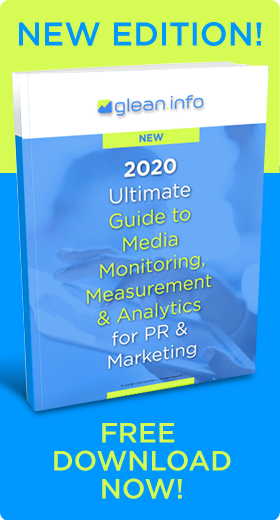 Predictive marketing is quickly becoming a key aspect of data-driven organizations. Companies and brands that embrace predictive marketing can uncover insights on consumer trends and preferences and they can achieve more cost-effective and targeted lead generation, according to a Forbes Insight survey of 308 CMOs and marketing directors.
Predictive marketing is quickly becoming a key aspect of data-driven organizations. Companies and brands that embrace predictive marketing can uncover insights on consumer trends and preferences and they can achieve more cost-effective and targeted lead generation, according to a Forbes Insight survey of 308 CMOs and marketing directors.
“Whenever customers or prospects are searching online, posting comments in communities or social media, or reading blogs or articles, they are showing intent or future interest. Intent data can be incredibly helpful at sending buyers who have a need now, especially when paired with fit and behavior data,” say Shashi Upadhyay, CEO of Lattice, which sponsored the survey.
These are some of the survey’s main findings.
- Most marketing leaders (84%) intend to ramp up spending on marketing technologies and initiatives.
- Most executives with experience in predictive analytics (86%) say the technology has already delivered a positive return on investment.
- About half of the organizations deemed “highly advanced” in predictive analytics say it has increased ROI by more than 25%.
- Skills in analytics are in high demand at more than two-thirds (68%) of organizations.
- Although beneficial, predictive analytics is challenging. Close to six in 10 organizations (58%) report that accurately measuring marketing is one of their most difficult obstacles.
- Improving customer retention rates is the most common type of metric followed. Overall, customer-value metrics are used by 36% of organizations. Predictive analytics also plays a key role in sales and revenue forecasts, as well as risk assessments.
Obstacles to Overcome
One of the largest challenges is to improve integration of siloed data from sales, marketing, operations and other parts of businesses. “Predictive marketing is an enterprise scale endeavor, so better integration of data from across all these silos is a key step for enterprises moving towards predictive,” Upadhyay says.
Predictive analytics requires technical and data analysis skills as well as business communications and greater integration between marketing executives and technology specialists. Organizations that develop these capabilities will gain an advantage.
Marketing needs to better understand the customer life cycle and play a larger role in managing and sharing data. Companies miss an important phase of customer engagement if they leave customer data to sales since 60% to 70% of the sales cycle is over before sales obtains customer data.
The Predictive Analytics Playbook
Predictive analytics enables marketers to understand what strategies work and why, says Michael Schultz, vice president of marketing and business development ClearSlide, a marketing platform.
“Knowing what is working makes all of the difference,” Schultz told Direct Marketing. “Far too often marketers are in constant production mode. So rather than analyzing the data and seeing what sticks and why, you get an anecdotal feedback about what’s supposedly working. So being able to apply analytics — particularly predicative analytics — enables marketers to really zero in on what’s really going to matter.”
Predictive analytics allows marketers to develop a successful content creation game plan. Examining customer’s past behaviors is like analyzing game films to create a winning strategy for the next game.
Incomplete and incorrect data poses a danger, Schultz warns. “Analytics are only as good as the data that you use,” he said.
Bottom Line: The power of predictive analytics has attracted the attention of data-driven organizations. Those who have adopted predictive analytics are already claiming significant benefits. But it’s not easy. Companies face many technical and organizational challenges in implementing predictive analytics. Companies that integrate disparate businesses units, attract personnel with technical and marketing expertise, and understand the impact of data within the customer sales cycle will win substantial advantages over competitors.
William J. Comcowich founded and served as CEO of CyberAlert LLC, the predecessor of Glean.info. He is currently serving as Interim CEO and member of the Board of Directors. Glean.info provides customized media monitoring, media measurement and analytics solutions across all types of traditional and social media.




